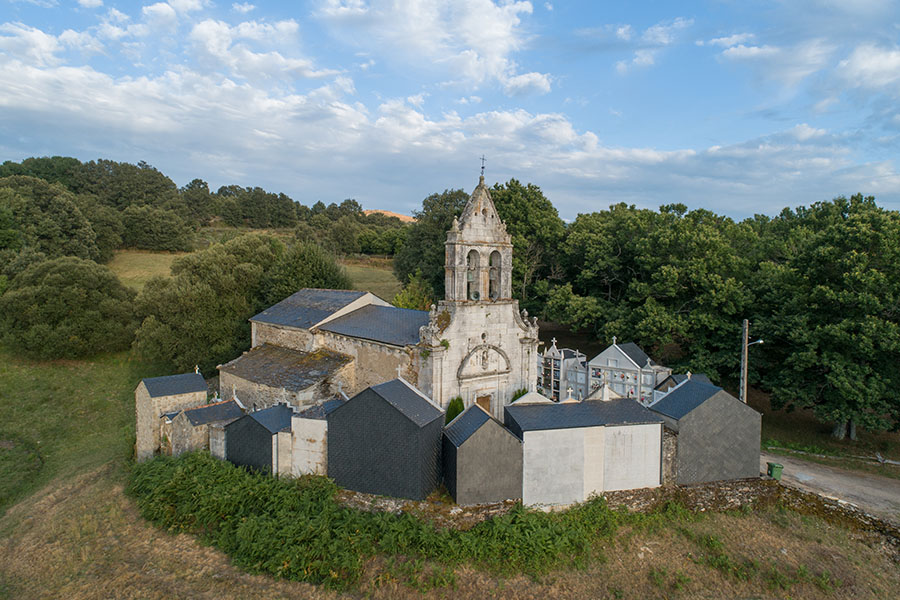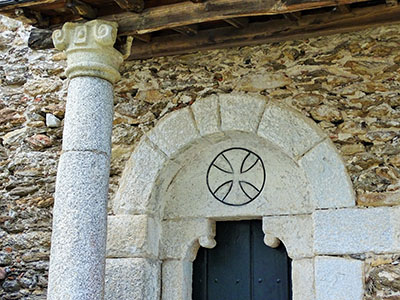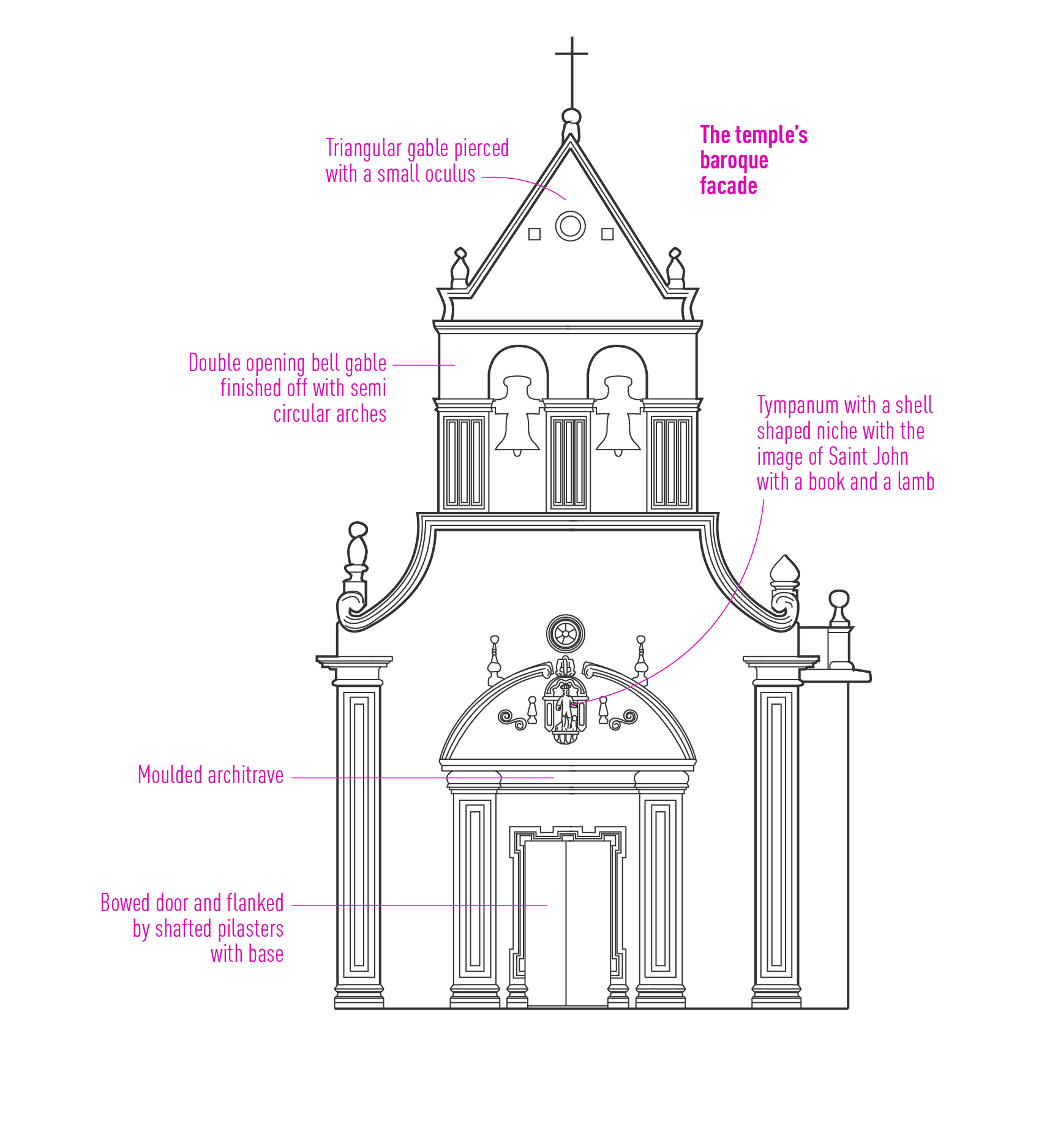
The temple of Saint Martin is a building of medieval origin that has undergone numerous restoration works. From the Romanesque period it conserves the nave, where its granite brackets still stand, supporting the cornice of the North and South walls. The latter is where the only medieval door is located, framed with a semicircular arch that covers a semicircular tympanum in which the cross of the Order of the Temple inserted in a circle is engraved. Below this pediment there are two imposts in the form of brackets that support it, causing the typical Romanesque equidistance. Protecting this door is a gabled roof supported by cylindrical granite columns crowned by capitals decorated with angular scrolls.

In the interior there is a beautiful neoclassical triumphal arch with pilasters and recessed brackets, decorated with a Doric capital and a ribbed collar.
The main altar possesses a majestic Baroque altarpiece carved in 1719 by Joannis Pita, entirely gilded in 1736, in which different scenes of the passion of Christ are narrated.

Saint Martin of Tours was born in Hungary at the beginning of the IV century. He was a Roman officer who converted to Christianity. According to tradition, he offered his soldier's cape to a beggar. At the age of 22 he was ordained a priest and led a hermit life near Genoa, founding the first monastery of the West. He was appointed bishop of Tours in the year 370, dying in 397. Saint Martin is the patron of the diocese of Ourense.
Another saint, Saint Martin of Braga, was a learned author of several important works, including the De correctione rusticorum ('on the correction of rural people') . He founded the monastery of Dumio, of which he was abbot, later becoming archbishop of Braga (Portugal).